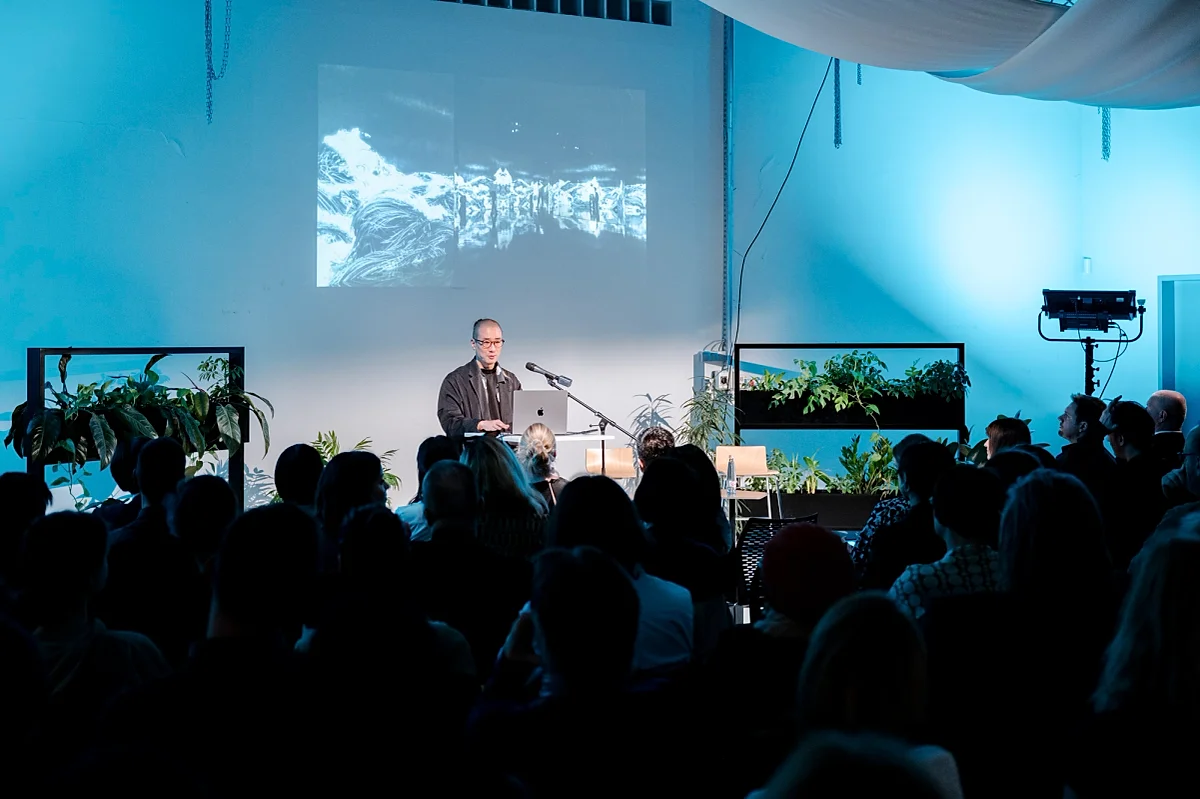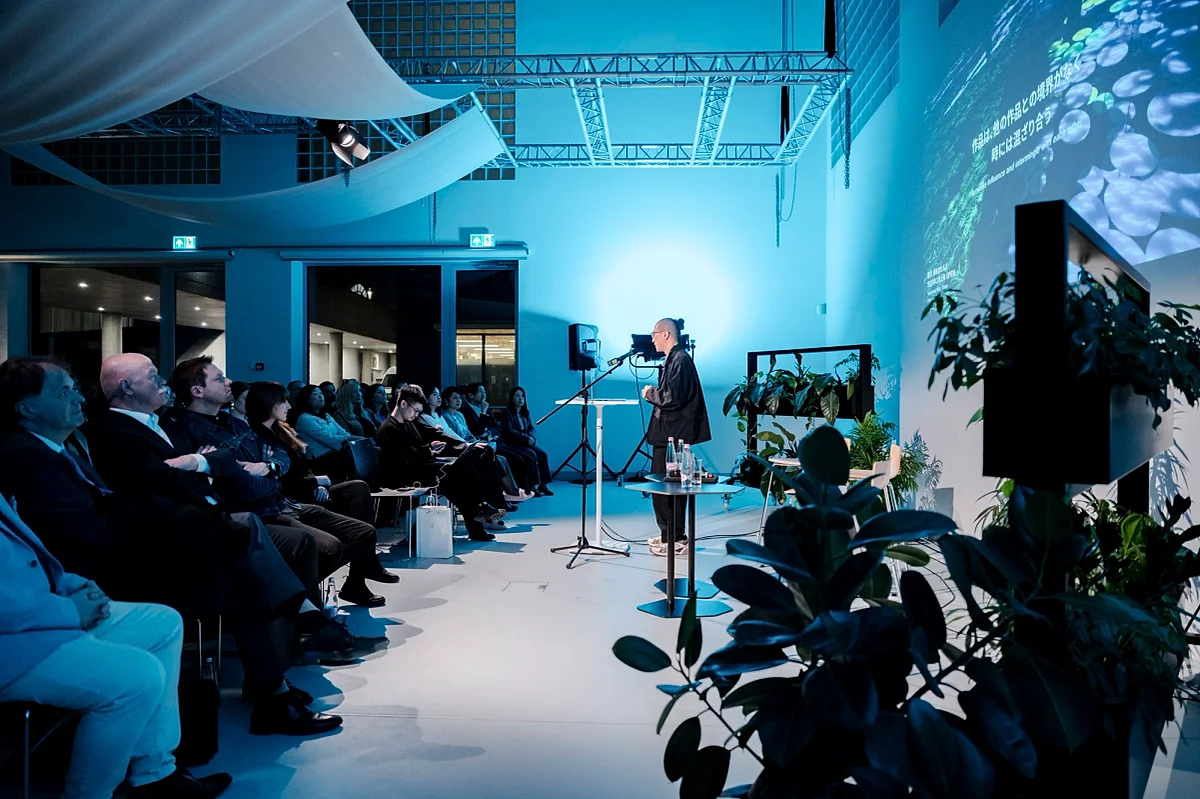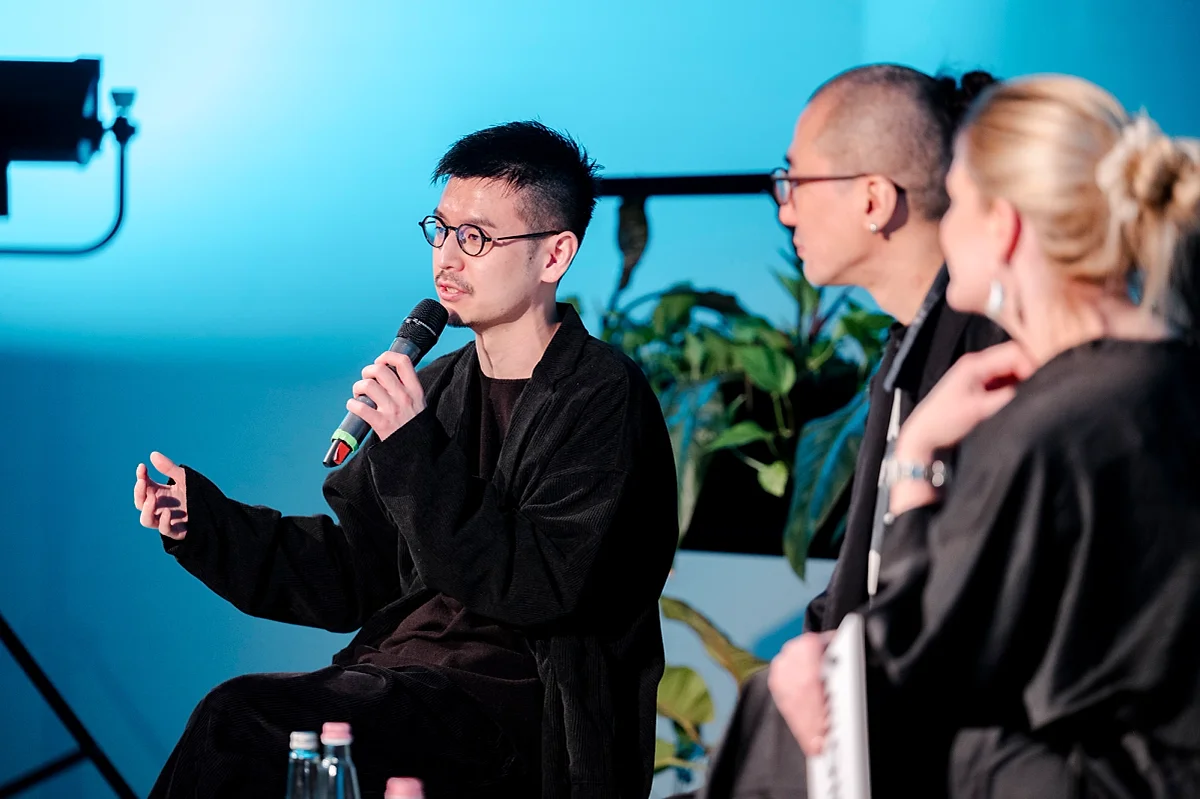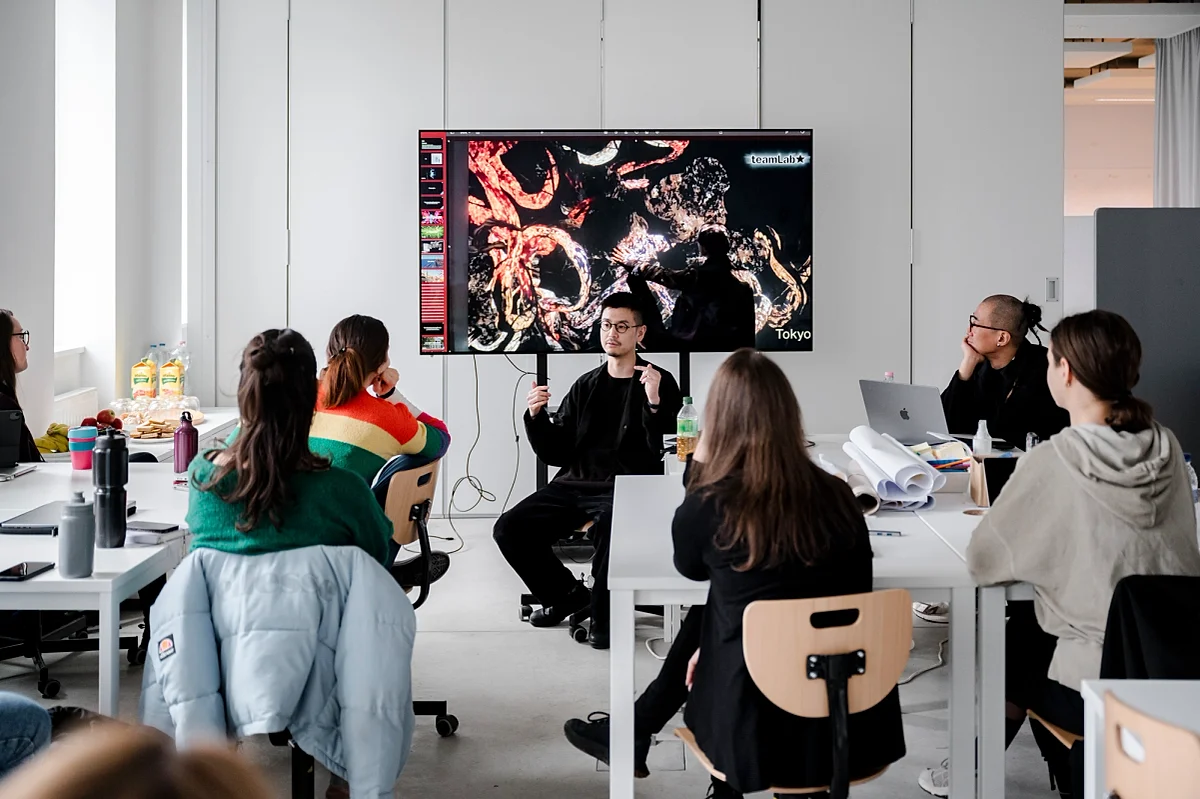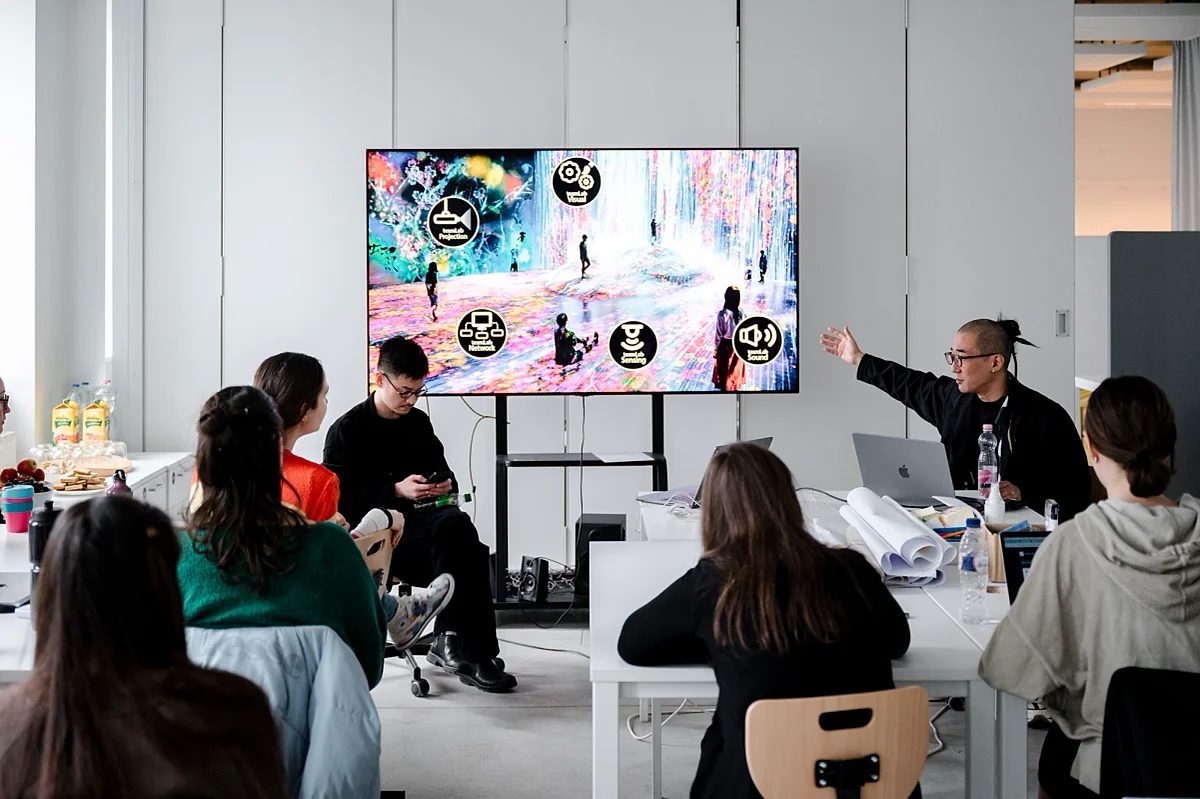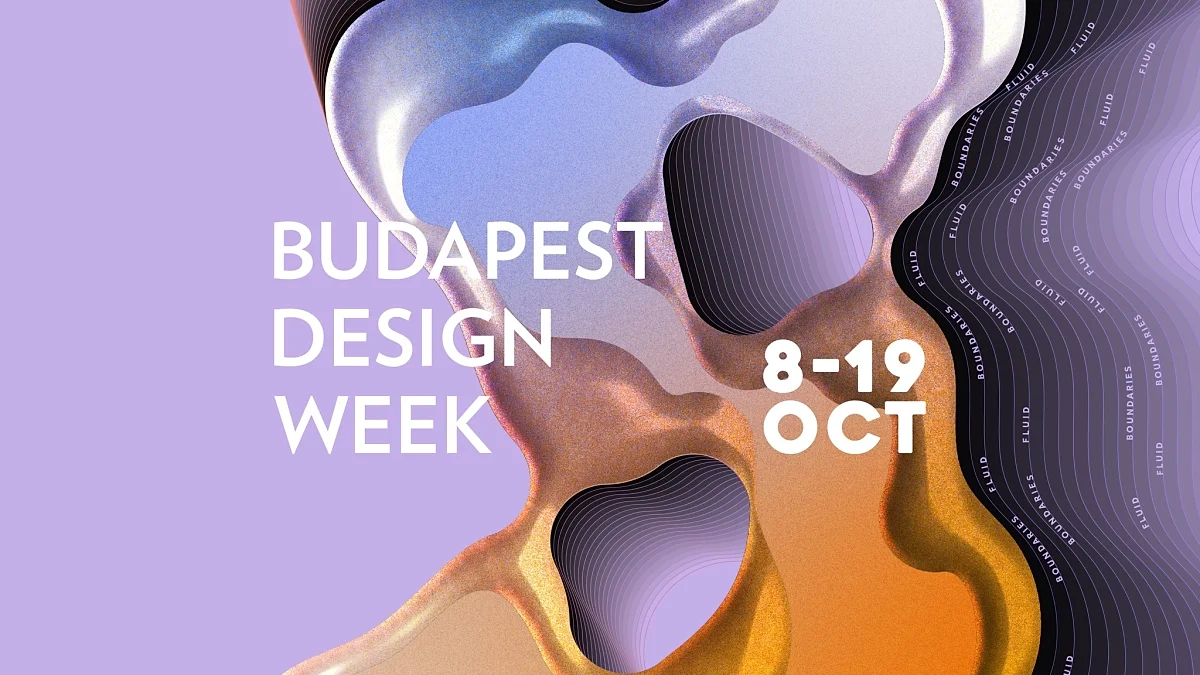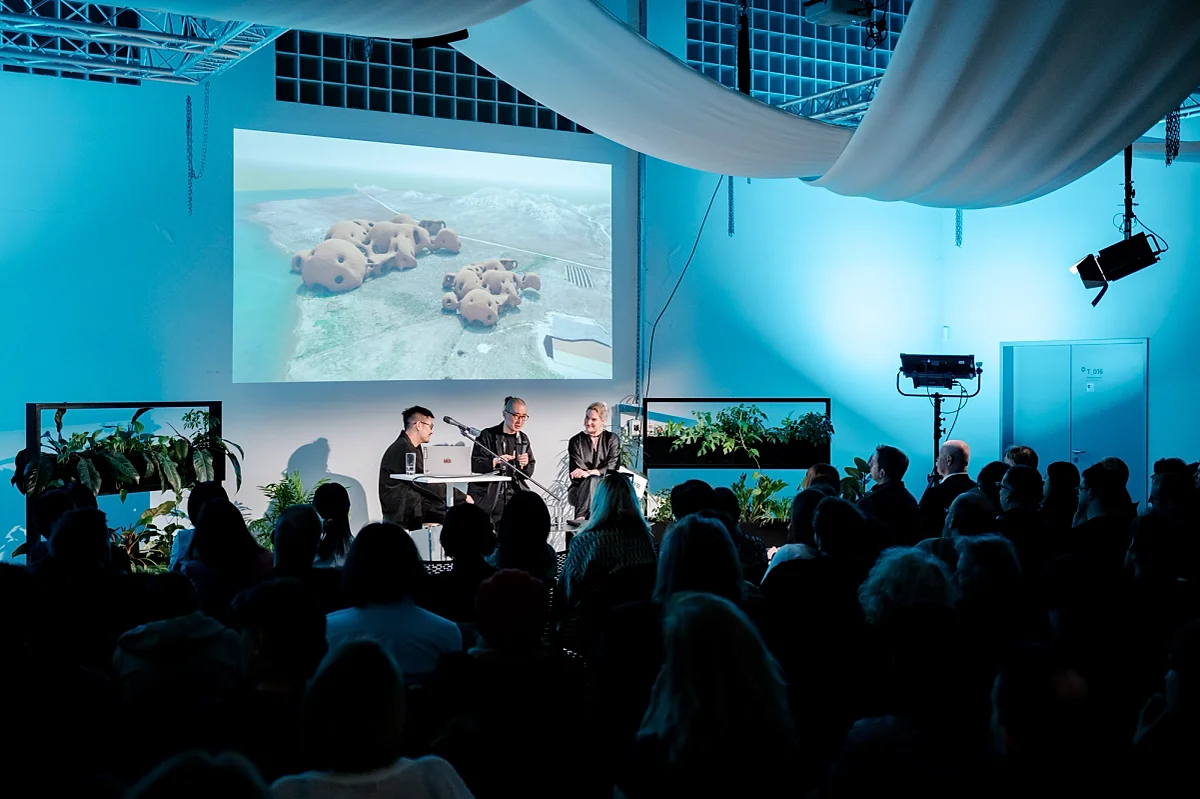
World-famous Japanese art collective teamLab visited Budapest
Representatives of the prestigious artist collective building magical visual worlds attracting millions of visitors from New York to Paris to Beijing came to speak in Hungary for the first time. Organised by the Moholy-Nagy University of Art and Design, the extraordinary panel discussion featured a demonstration and insights into the workings of teamLab, as well as an overview of its most intriguing projects and the creative work behind them.
The mission of the international collective composed of artists, programmers, engineers, CG animators, mathematicians, and architects is to redefine the relationship between the self and the world through art and uncovering new forms of perception. Their immersive spaces blur the line between water and land, the past and the future, fantasy and reality, with mobile applications adding extra layers to the experience to provide food for thought or move your emotions. The creatures and shapes inhabiting the spaces and responding to the visitors’ movements are in constant motion, each of them unique and inimitable.
Their interdisciplinary works blur the line between science and art, technology and real life. Founded in 2001 but gained worldwide fame in 2018, the group today owns several exhibition spaces. TeamLab’s artworks are located all over the world, including in contemporary art museums in Los Angeles, Sydney, San Francisco, New York, Istanbul, Helsinki, and Melbourne. In addition to having their breathtaking installations shown in public spaces around dozens of metropolises, they have also created numerous own museums and exhibition spaces across Japan currently available for viewing. Unconventional also in terms of organisational structure, the collective straddles the line between business and art. In addition to their own productions, they are also involved in architectural projects and designing exhibitions for other museums.
This spring, two of its members Takashi Kudo and Takeshi Yamada spent an entire day at the Campus of the Moholy-Nagy University of Art and Design (MOME) for the purpose of holding a workshop for students and presenting their workings, creative processes, and inspirations to the general and professional public.
Takashi Kudo’s presentation gave a glimpse into several internationally successful projects. Debuted in 2016, Wander through the Crystal Universe combines digital pointillism and light sculpting in its depiction of the universe. The installation creates an illusion of infinite space, and is constantly shifting and evolving as visitors pass through and interact with it using their smart phones. Currently on display, Borderless is a borderless, fantastical universe of unique artworks interacting in real time, a museum without a definite map. The title is a reference not only to this particular exhibition, but also their entire credo: a desire to blur the lines and transcend the boundaries between disciplines. Planets has been inspired by and being one with nature. Walking through it barefoot, visitors can experience and become one with the surrounding magical garden in a unique way.
What inspires these magnificent artworks and how are they created? Led by organisational psychologist, strategist, and Rector’s Commissioner Lili Érmezei, the discussion with Takashi Kudo and Takeshi Yamada introduced the conceptual and physical creative processes of the collective. Its multidisciplinary team lacks conventional hierarchy, with each member innovating and giving their very best in their own area of expertise for the shared goal of creating extraordinary outputs. They use groundbreaking technologies and their own experiences and cultural heritage as a source of inspiration. While artificial intelligence is an inescapable topic and source of information today, teamLab members predominantly rely on their personal emotions and experiences for inspiration, and only use AI for the actual implementation. Their art draws on current issues, and wants to create an impact on the viewer, as well as their thinking and perspectives. The informal roundtable discussion also touched upon the role of their families and their influence on their philosophical approaches, augmented reality tools, technologies of the future, as well as one of their ongoing projects.

